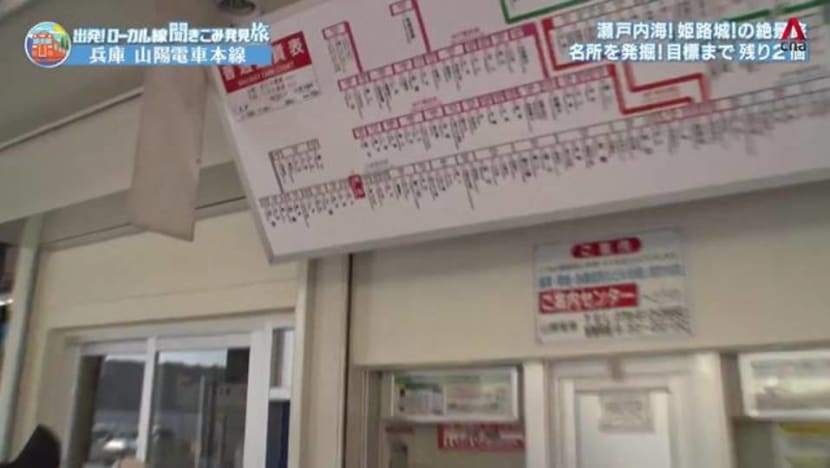Road Trip On Sanyo Railway - Part 2
A shrine by the sea with a historic Noh stage, a cafe which sells Himeji's famous almond toast and a garden inspired by the outer moat of World Heritage Site Himeji Castle are featured this week.

We continue our two-day trip on the Sanyo Electric Railway Main Line in Hyogo Prefecture. We end the first day at Fujie Station and decide to hitch a ride to Hotel Castle Plaza. A lady agrees to give us a ride to the hotel as she has errands to run in Nishi Akashi, which is near the hotel. While we are chatting with her during the 15-minute car ride, she suggests we check out the Sumiyoshi Shrine at Uozumi.
The next morning, we walk to Nishi Akashi Station and then take the 9.30am bus to Fujie Station. From here, we head by train to Sanyo Uozumi Station, after which we walk to the Sumiyoshi Shrine. Facing the Seto Inland Sea, it enshrines the god of the sea. Every June, about 2,500 hydrangeas bloom on the grounds of the shrine. The first lord of Akashi ordered the shrine to be built in 1627. A historic Noh stage at the shrine was built in the early Edo period. It still retains its original appearance and is a designated cultural property of Akashi City. Each year in May, local volunteers will put up a Noh performance.
We take the 12.05pm train to Takasago Station, which is 20 minutes away. The next train from here is 1.5 hours later. We drop by the Shimomura Shoten store, which sells the area’s famous conger eel. This shop was loved by popular actor Hisaya Morishige and comic storyteller Beicho Katsura. This area has long been a producer of conger eel. There used to be many conger eel shops in the past. We get to sample some of Shimomura Shoten’s grilled conger eel.
Mr Shimomura tells us he likes the steamed conger eel at the Kakiko restaurant. It was established in 1920 when the first owner, who used to transport oysters from Hiroshima to Osaka, opened an oyster restaurant in this town. Although the restaurant is still popular for its oyster dishes, when Hiroshima oysters are not in season, it serves Kaiseki cuisine featuring conger eel. We decide to have the conger eel set meal, which includes conger eel and vegetable tempura, grilled conger eel with soy sauce, conger eel rice box and soup.
We then take the train departing at 2.45pm to Oshio, four stations away. A lady at a flower store at Oshio recommends we check out Cafe La Dada in front of the terminal, Sanyo Himeji Station. It sells Himeji’s speciality, almond toast.
So we head to our goal of Himeji by the 3.25pm train and walk to the recommended cafe from Sanyo Himeji Station. It opened more than half a century ago and is one of the cafes that helped to establish Himeji's breakfast culture. An essential part of Himeji's breakfast is almond toast. At Dada, they spread a lot of fluffy homemade almond butter on bread and toast it.
A couple we speak to mentions another popular attraction in Himeji, Enkyoji Temple, where “The Last Samurai” was filmed. However, it is 10 minutes away by car and we would also need to take a ropeway, so we choose to give it a miss. There is also the famous Himeji Castle, which became one of Japan’s first UNESCO World Heritage Sites in 1993. It is also known as the White Egret Castle and its castle tower was completed in 1609.
The last spot we visit is Castle Garden. It was created as part of the redevelopment of the area in front of the station. It is a relatively new landmark of the city where people hang out and relax. The garden was inspired by the outer moat of Himeji Castle.
Tips:
1) Sumiyoshi Shrine by the sea is known for its famous Noh stage and hydrangeas
2) Almond toast is one of the specialities of Himeji City










